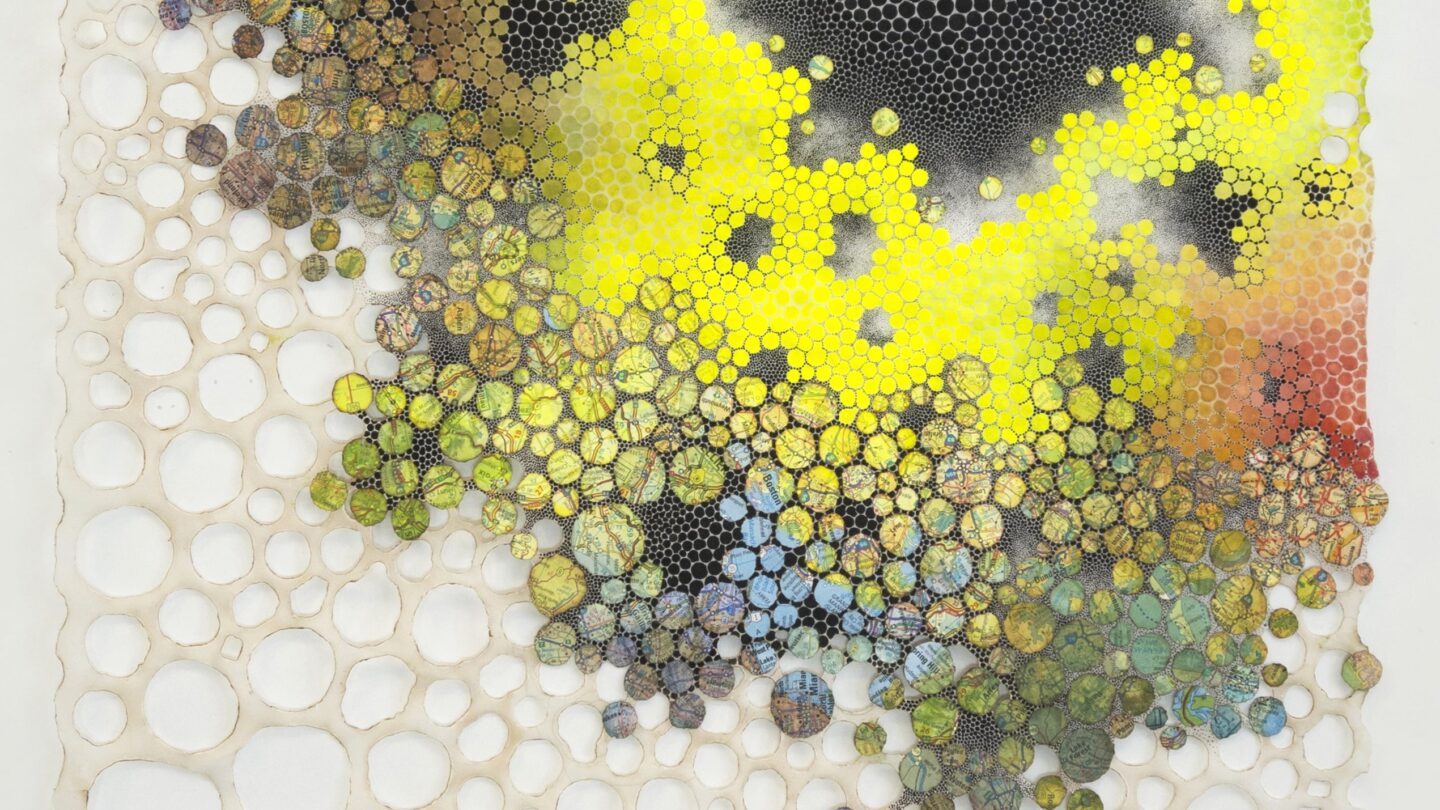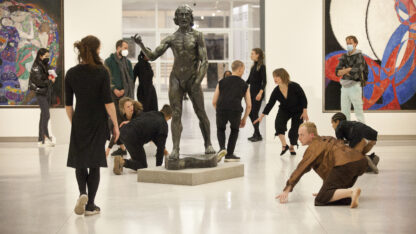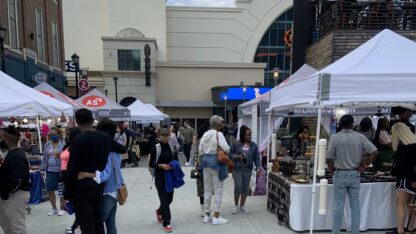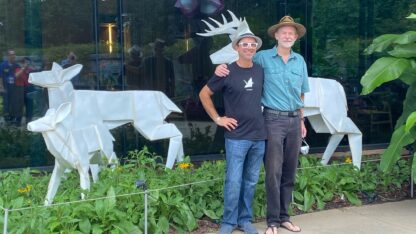'Paper Cuts' exhibit displays paper transformed into works of art at Reeves House Gallery

From one piece of paper, a million ideas can be born. On view through Oct. 23 at the Reeves House Visual Arts Center in Woodstock, the new Woodstock Arts gallery exhibition “Paper Cuts” showcases the myriad ways paper can be transformed into a work of art.
Along with featured artist Charles Clary, the gallery’s curator and visual arts director Nicole Lampl joined “City Lights” host Lois Reitzes via Zoom to talk more about this collection of works in paper.
Interview highlights follow below.
An artists’ celebration of the medium of paper:
“In our very, very first show, ‘Reconstructing Home,’ we had a piece by Sara Farrington where she did a whole recreation of furniture pieces, sort of a little vignette, completely out of paper. And Griffin Carrick, who’s also… in our ‘Women’s Work’ exhibit, and she does paper quilling. So it just coalesced from all of these different pieces that I kept including in the exhibit,” said Lampl. “It just seemed like it would make such an interesting exhibition to see what you can do with such a humble, everyday medium, and completely transform it into something else.”
“It’s a material that probably almost everybody has in their home, whether that’s scrap paper; we have an artist, Anna Grace Burch, who literally made a piece out of receipt paper; an artist who made things out of a book that she kind of sculpted, essentially,” Lampl said. “It’s an everyday material that you can find in your house, and so it’s a great way for people to realize that art isn’t such a far reach…. In conjunction with the show, we’re doing a bunch of workshops and classes on paper making and origami, so that really makes it incredibly approachable, because then you get to actually learn the techniques as well.”
On the intricate hand-cut paper sculptures of Charles Clary:
“My process is very intuitive. I looked at a lot of architectural model-making when I was in grad school at the Savannah College of Art and Design, and really kind of fell in love with the meticulous nature of the material,” said Clary. “Every time somebody sees my work in the very beginning, they immediately go to ‘laser cut,’ and I have to kind of shake my head at their disbelief that it’s all hand-cut. And as they take a closer look, they can still see a few pencil lines here and there.”
How Clary brings along a visual language of shapes from music to painting to paper:
“I was a percussionist and a painting-slash-illustration major, and something about the visual arts just really kind of connected to me, but I couldn’t let the musical components go. So the beginning work is all about this visual translation and connection to computer-generated sound waves, and how those looked like viral colonies that you would see in a petri dish, and then how that kind of relates to archipelago land formations,” Clary explained. “So I really just kind of started rolling with it, and they originally started out as action paintings.”
He went on, “I was playing the percussion with house paint and drumsticks onto a plastic surface, and then letting that action play out, and then allowing it to dry, and then I could peel that paint up off the plastic and then use those as stencils for shapes within my paintings. And then those shapes stayed, when all the other processes kind of dipped out, and that’s really where I got a lot of my shapes.”
Other treasures from the “Paper Cuts” exhibit:
“There’s also a really great piece by Maggie Kerrigan… where she has meticulously and, to most people’s eyes, perfectly cut pages out of a book, pasted them all together into one long scroll, and then that is suspended from the ceiling in various sort of heights coming down to the floor. And in the center of that is a pedestal with the book that it was originally from, and it has all of these little circles of paper, which were the circles that had been punched out,” Lampl said.
She added, “It’s a book about when the US government was trying to assimilate Native American children by removing them from their homes and sending them to boarding schools. The boarding schools were known for pretty atrocious abuse, neglect, and even malnutrition, and it was really about erasing their culture in a lot of ways…. The book… is called ‘The Tender Land, and it’s a fictional story that illustrates the plight of the Native American children who endured life in these schools.”
“Paper Cuts” is on view at the Reeves House Visual Arts Center in Woodstock through Oct. 23. More information is available at https://woodstockarts.org/events/exhibition-paper-cuts/








